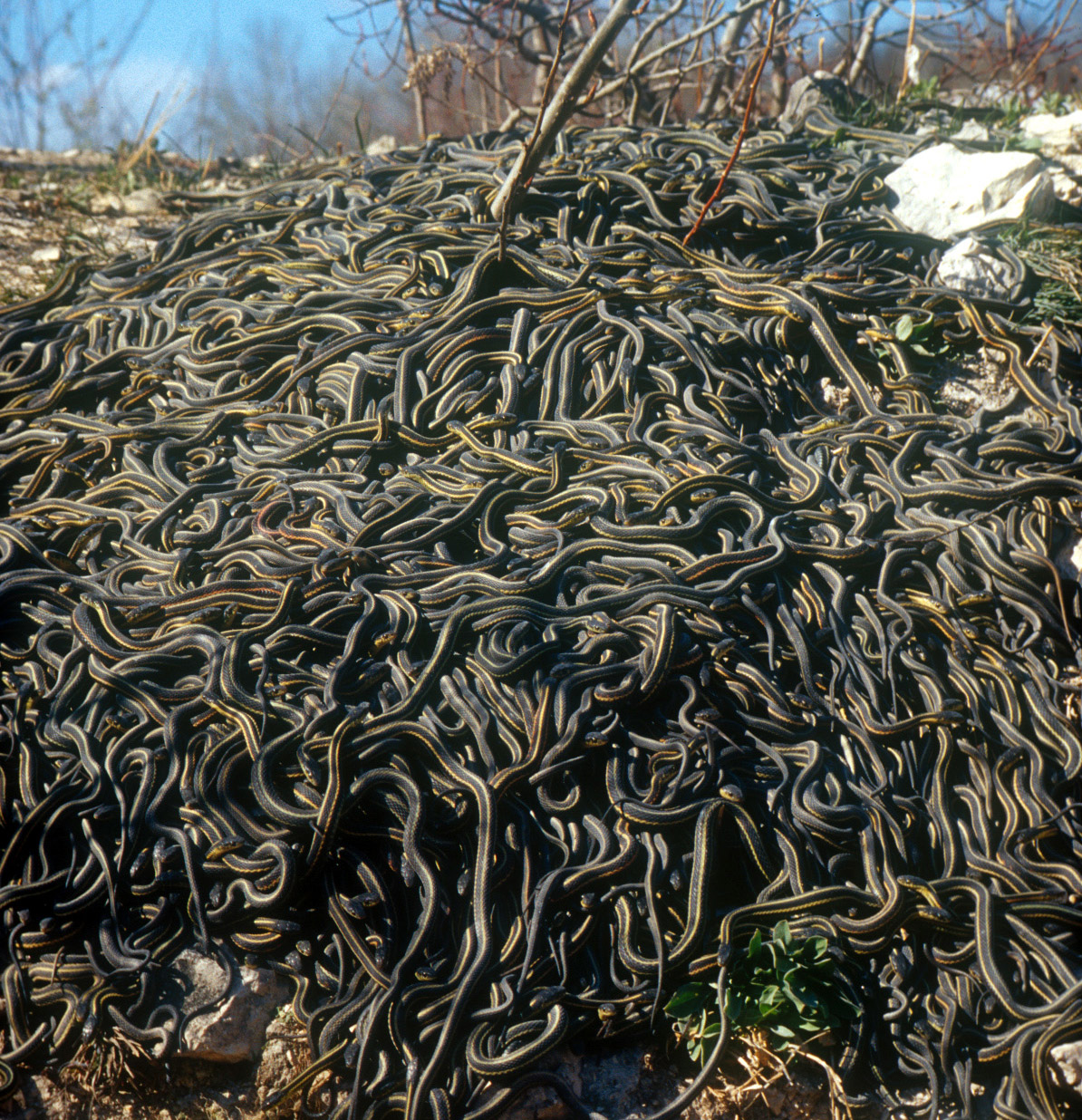
They have edged chevrons on their backs and bars on their tails.

Puff adders in South Africa are large snakes that are yellow-brown to light brown in colour. They are known to hiss loudly and coil up in an “S” shape when disturbed. While they may appear fat and lazy-looking, they can strike fast. This is partly because they produce large amounts of cytotoxic venom, have long fangs and habitually lie around footpaths quietly. This snake species accounts for more snakebite deaths than any other snake in Africa. Watch out for African puff adders when hiking on Table Mountain. As the name suggests, the boomslang is primarily a tree-living snake but they do descend to the ground. Males tend to be light green in colour with black/blue scale edges, while females are commonly brown. Boomslangs have large eyes and egg-shaped heads, with large adults reaching lengths of 1.8+ metres (6.00 ft). But, unlike the Cape cobra, its venom is a slow-acting hemotoxin that affects blood and blood vessels and causes internal bleeding. The boomslang, like the Cape cobra, is highly venomous and deadly. People often mistake Cape cobras for mole snakes, a non-venomous snake species.Īnother serpent that falls into the dangerous Table Mountain snakes category is the boomslang (“tree snake” in Afrikaans). The snakes inhabit fynbos and bushveld areas. Cape cobras, which range in length from 1.2 to 1.6 metres (3.9 to 5.2 ft) and can be yellow, golden brown or dark brown in colour, typically raise their forebodies, flare out their hoods and hiss in threatening situations, striking without hesitation when necessary. It can kill a human in as little as an hour. It has potent venom that causes the nervous system, heart and respiratory system to malfunction. The Cape cobra, or yellow cobra, is one of the most dangerous snakes on the mountain and in Africa. There are three particularly dangerous Table Mountain snakes to look out for while hiking the mountain: the Cape cobra, the boomslang and the African puff adder. The docile but deadly boomslang (see defensive Cape cobra above this image). Venomous snakes are responsible for a lot of fatalities in Africa. But, if they feel threatened by humans or animals, then they will strike. Snakes are “introverts” and don’t normally behave aggressively. There are 22 species of snake inhabiting Table Mountain, most of which are highly venomous and dangerous.

Do not fear the slithering creatures as you explore the mountainous pathways and routes, though. What snakes do you find on Table Mountain? Well, just as there are many different plants, trees and river streams on the mountain, there are plenty of snakes on Table Mountain.

However, snakes are scarce on the hiking routes of Table Mountain and spotting them is rare. At least, that is how most city folks feel (fear of snakes is a common phobia) and many hikers feel that way, too.Īre there snakes on Table Mountain? A relatively uncommon question that we receive about our hiking tours but an important one. Unsurprisingly, there are also things that you won’t want to see, one of them being snakes. Of course, when you commit to going on hike up Table Mountain, there’s a lot that you will want to see there. And when you make the decision to hike this popular Natural Wonder of South Africa, you get to witness the incredible natural beauty on and around the massive structure. Table Mountain is a beautiful and unique mountain in Cape Town, with dozens of adventurous Table Mountain hiking trails. Table Mountain snakes awareness for hikers


 0 kommentar(er)
0 kommentar(er)
